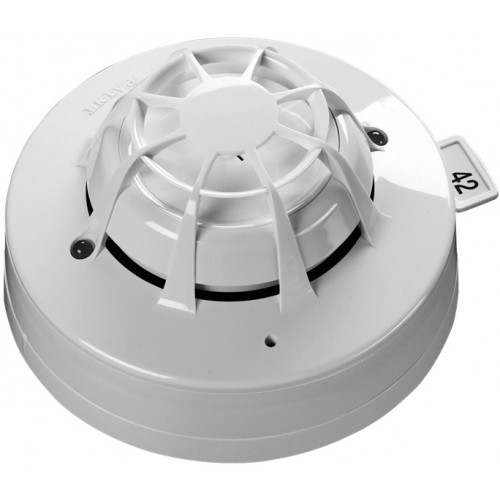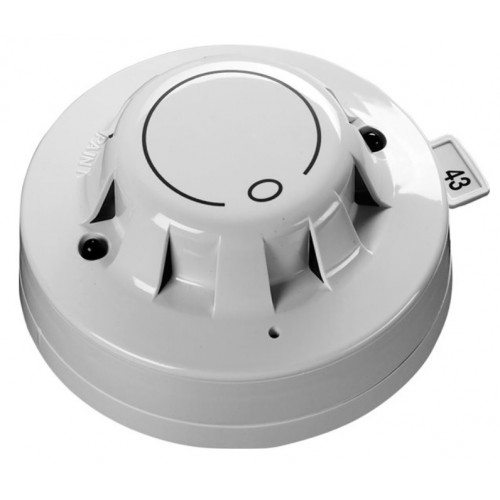Apollo Discovery Multisensor Detector 58000-700APO
Apollo Discovery Multisensor Detector 58000-700APOThe Discovery Multisensor Detector consists of optical smoke and thermistor temperature sensors which give both a combined signal as well as a separate heat signal for improved false alarm management. The Discovery Multisensor construction is similar to that of the optical detector but uses a different lid and optical mouldings to accommodate the thermistor heat sensor.The Discovery OpticalHeat Multisensor Detector contains an optical smoke sensor and a thermistor temperature sensor whose outputs are combined to give the final analogue value. The way in which the signals from the two sensors are combined depends on the response mode selected. The five modes provide response behaviour which incorporates pure heat detection pure smoke detection and a combination of both.The multisensor is therefore useful over the widest range of applications. The signals from the optical smoke sensing element and the temperature sensor are independent and represent the smoke level and the air temperature respectively in the vicinity of the detector. The detectors micro-controller processes the two signals according to the mode selected.When the detector is operating as a multisensor i.e. modes 1 3 and 4 the temperature signal processing extracts only rate-of-rise information for combination with the optical signal. In these modes the detector will not respond to a slow temperature increase even if the temperature reaches a high level. A large sudden change in temperature can however cause an alarm without the presence of smoke if sustained for 20 seconds.Response ModesMode 1 has very high smoke sensitivity combined with high heat sensitivity. This gives a high overall sensitivity to both smouldering and flaming fires.Mode 2 has a smoke sensitivity similar to that of a normal optical smoke detector. This mode is therefore equivalent to a standard optical detector. It is suitable for applications in which wide temperature changes occur under normal conditions.Mode 3 has moderate smoke sensitivity combined with a moderate sensitivity to heat. This combination is considered the optimum for most general applications since it offers good response to both flaming and smouldering fires.Mode 4 has lower than normal smoke sensitivity combined with high heat sensitivity. This makes it suitable for applications in which a certain amount of fumes or smoke is considered normal.Mode 5 has no smoke sensitivity at all but gives a pure heat detector response meeting the response time requirements for a Class A1R detector in the European Standard EN 54- 5. In this mode the detector will respond to slowly changing temperatures and has a fixed temperature alarm threshold at 58OC. The analogue value in this mode will give the approximate air temperature over the range 15OC to 55C. In Mode 5 the smoke sensor is still active though it does not contribute to the analogue signal. As a consequence if the detector is used in a dirty or smoky environment the optical sensor drift flag may be activated in the heat only mode.Key FeaturesIdeal for a wide range of applicationsEnhanced false alarm managementRecommended in specific modes for hotel bedrooms and hospital wardsUnaffected by wind or atmospheric pressureWell-suited to sensitive environmentsFive EN 54 approved response modesHeat only and optical only optionsRemote test feature


